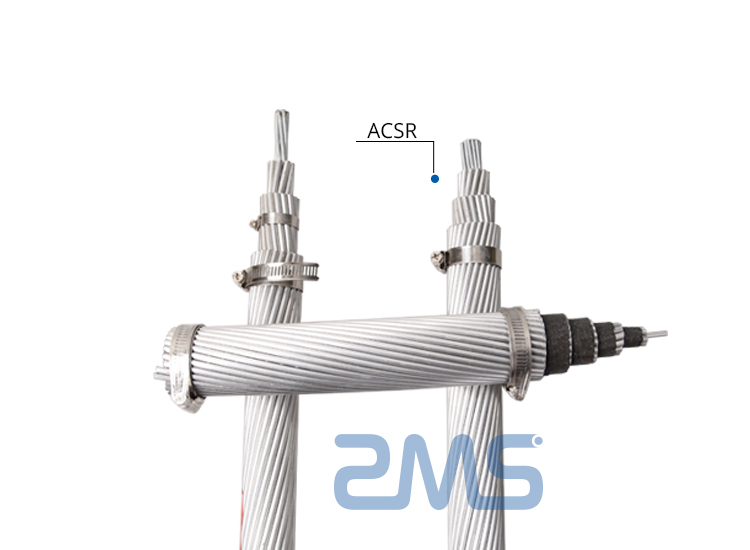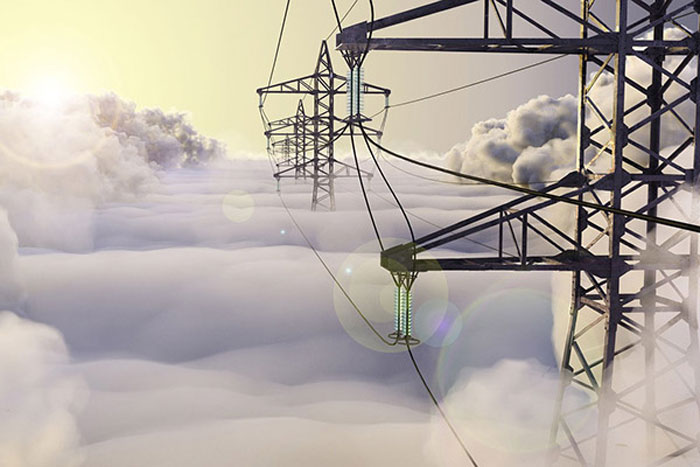Overhead cables are a crucial part of electrical and communication infrastructure around the world. When driving along roads, you often notice cable towers or pylons carrying different types of wires and cables. These overhead cables serve various functions, from transmitting electricity to facilitating telecommunications and internet services. The types of overhead cables used in roadside cable towers vary based on their application, design, and the amount of voltage they need to carry.
This article delves deep into the most common types of overhead electric cables you’ll find in roadside cable towers, their specific functions, how they work, and the key differences among them. By the end, you’ll have a thorough understanding of these cables’ vital role in modern infrastructure and the factors that influence their design and application.

1. Electrical Power Transmission Cables
a. High Voltage Power Lines
The most common cables you see in roadside towers are electrical transmission cables, which carry high-voltage electricity over long distances. These lines transport electricity from power generation plants to substations, where the voltage is reduced for local distribution.
- Conductor Material: Typically, high-voltage transmission cables use aluminum or aluminum reinforced with steel due to their excellent conductivity, lightweight nature, and corrosion resistance.
- Insulation: Unlike lower voltage lines, high-voltage transmission cables are often uninsulated since the air itself acts as an insulating medium. This reduces the cost and weight of the cables.
- Voltage Range: High voltage transmission lines usually carry voltages from 110 kV (kilovolts) to 765 kV.
- Function: These lines are essential for transmitting electrical power across long distances from power generation facilities to local distribution networks.
b. Medium Voltage Power Cables
Medium voltage cables are often seen alongside high-voltage power lines, though they carry lower voltages. These cables are responsible for distributing electricity from substations to local transformers that reduce the voltage for safe delivery to homes and businesses.
- Voltage Range: Medium voltage power cables typically carry between 1 kV and 35 kV.
- Insulation: These cables are insulated with materials like cross-linked polyethylene (XLPE) or ethylene-propylene rubber (EPR), which are resistant to high temperatures and moisture.
- Use: They are frequently used in smaller or more urban cable towers that supply power to residential and commercial areas.
c. Low Voltage Power Cables
Low voltage overhead power cables are used for the final step in delivering electricity to homes and small businesses. These cables operate at voltages below 1 kV and are commonly seen in urban areas, strung along shorter poles that line city streets and neighborhoods.
- Voltage Range: Below 1 kV.
- Insulation: Often insulated with polyvinyl chloride (PVC) or other protective materials to ensure safety.
- Function: Low voltage power lines deliver electricity directly to individual consumers from nearby transformers.

2. Telecommunication Cables
a. Fiber Optic Cables
One of the most advanced forms of telecommunication cables seen on cable towers today is the fiber optic cable. These cables are widely used to transmit internet and telephone signals at high speed and over long distances.
- Structure: Fiber optic cables consist of thin strands of glass or plastic fibers that carry information using light signals rather than electrical currents.
- Speed and Capacity: Fiber optics can handle extremely high bandwidth, making them essential for modern telecommunications, including Internet and cable television.
- Insulation: These cables are insulated with materials that protect the delicate fibers inside from moisture and physical damage.
- Placement: In some areas, fiber optic cables may be buried underground, but it is also common to see them running overhead on the same towers as electrical power lines.
b. Coaxial Cables
Coaxial cables are another type of telecommunication cable that you may see in roadside cable towers. While they are slowly being phased out in favor of fiber optics, coaxial cables are still widely used in certain applications, particularly for television services and internet connections in rural or less developed areas.
- Structure: Coaxial cables consist of a central conductor (usually made of copper), surrounded by insulation, a metal shield, and an outer protective layer. This structure helps reduce electromagnetic interference.
- Bandwidth: Coaxial cables don’t offer the same bandwidth capabilities as fiber optic cables, but they can still transmit data at relatively high speeds.
- Insulation: The layers of insulation and shielding help protect the signal from interference, making coaxial cables a reliable option for transmitting television and internet data.
c. Telephone Lines
Though less common in newer infrastructure, traditional copper telephone lines can still be seen strung along roadside cable towers. These cables are used for landline telephone services and, in some areas, for dial-up internet.
- Material: Telephone lines typically use copper wires, which have good conductivity and are relatively inexpensive.
- Signal Transmission: Unlike fiber optic cables, which use light, telephone lines transmit analog or digital signals using electrical currents.
- Insulation: Copper telephone lines are insulated to prevent electrical interference, though the level of insulation is not as robust as in high-voltage power lines.

3. Hybrid Cables
In modern infrastructure, it’s not uncommon to find hybrid cables running overhead. These cables combine different types of signals (such as power, internet, and television) into one cable system to reduce the number of cables needed and simplify the overall network.
a. Power and Fiber Optic Combined
One common hybrid cable combines electrical power lines with fiber optic cables. This allows for the transmission of both power and data over the same infrastructure, making it more cost-effective and reducing the number of cable towers needed along roadsides.
- Structure: These hybrid cables typically have a fiber optic core surrounded by layers of insulation and shielding, with a power conductor running alongside it.
- Advantages: Using a single tower to carry both power and telecommunications cables saves space and reduces the visual clutter along roads.
b. Ethernet and Power Over Ethernet (PoE) Cables
In certain areas, particularly in industrial settings, you may see Ethernet cables running alongside power lines in cable towers. These Ethernet cables are used to transmit data over local networks. In some cases, Power over Ethernet (PoE) cables are used, which can transmit both electrical power and data over the same cable.
- Structure: PoE cables combine data and power lines into one cable, reducing the need for separate power lines to power devices like security cameras or wireless access points.
- Applications: PoE cables are often used in situations where it is difficult to install separate power lines for devices, making them useful in remote or hard-to-reach areas.
4. High-tension cables for Railways
In addition to the cables mentioned above, some roadside cable towers carry specialized high-tension cables for railways. These overhead lines provide electrical power to trains and trams.
- Voltage Range: The voltage for these overhead cables is typically higher than residential and commercial lines but lower than long-distance transmission lines.
- Structure: High-tension cables for railways are usually bare conductors (like other high-voltage lines) but are designed specifically to withstand the constant movement of trains.
- Insulation: The cables themselves may not be insulated, but their positioning and support structures are carefully engineered to ensure safe operation.
5. Supporting Cables and Guy Wires
Besides power and communication cables, some of the cables you see on roadside towers may serve a purely structural function. These are known as supporting cables or guy wires, which are used to stabilize the towers or poles.
- Material: Guy wires are typically made of steel and are designed to bear the mechanical load of the tower, particularly during high winds or heavy rain.
- Function: These cables don’t carry any electrical current or data but are crucial for maintaining the structural integrity of the tower and ensuring that the cables remain in place.
Key Factors That Influence the Choice of Overhead Cables
- Voltage Requirements
- Different cables are required based on the voltage levels they need to carry. High-voltage cables for transmission purposes differ greatly from low-voltage cables that supply homes.
- Insulation
- While some cables, like high-voltage transmission lines, are left uninsulated, others must be carefully insulated to protect them from the environment and to prevent interference with nearby cables.
- Environmental Conditions
- Overhead cables, including rain, snow, and extreme heat, are exposed to the elements. The materials used in these cables are chosen for their durability and resistance to corrosion, UV radiation, and temperature fluctuations.
- Conductor Material
- Conductors are typically made from materials like copper and aluminum, which offer a balance of conductivity, strength, and cost-effectiveness.
- Safety and Regulations
- Governmental regulations determine how overhead cables are designed and installed, particularly regarding safety concerns for both the general public and utility workers.

Overhead cables play a vital role in maintaining modern infrastructure, carrying everything from electrical power to high-speed internet. Whether it’s high-voltage transmission lines, fiber optic cables, or hybrid systems that combine multiple functions, the cables carried by roadside towers are designed to meet specific technical requirements and withstand harsh environmental conditions.
Understanding the types of overhead cables and their functions offers insight into the complexity and sophistication of the systems that power our homes and keep us connected to the world. Whether you’re an engineer, a student, or simply someone curious about how things work, recognizing these cables helps appreciate the infrastructure that supports daily life.